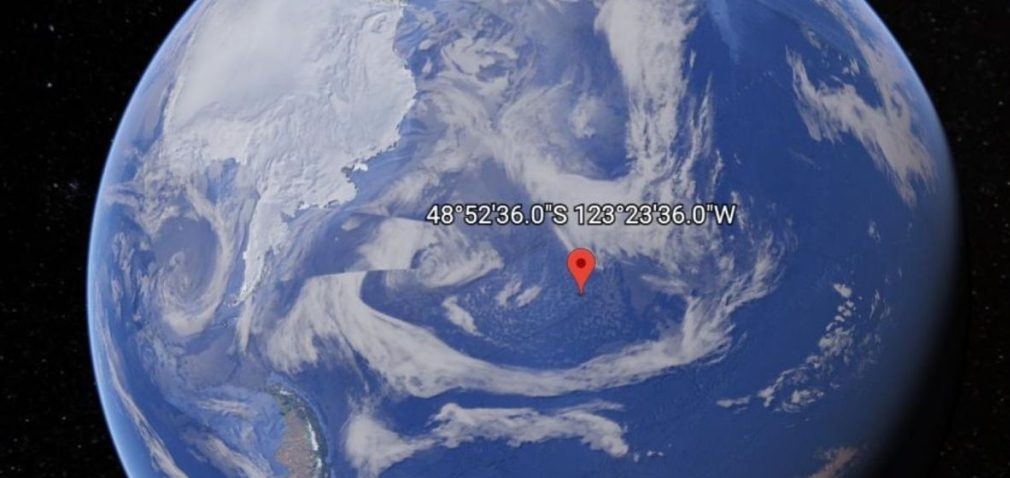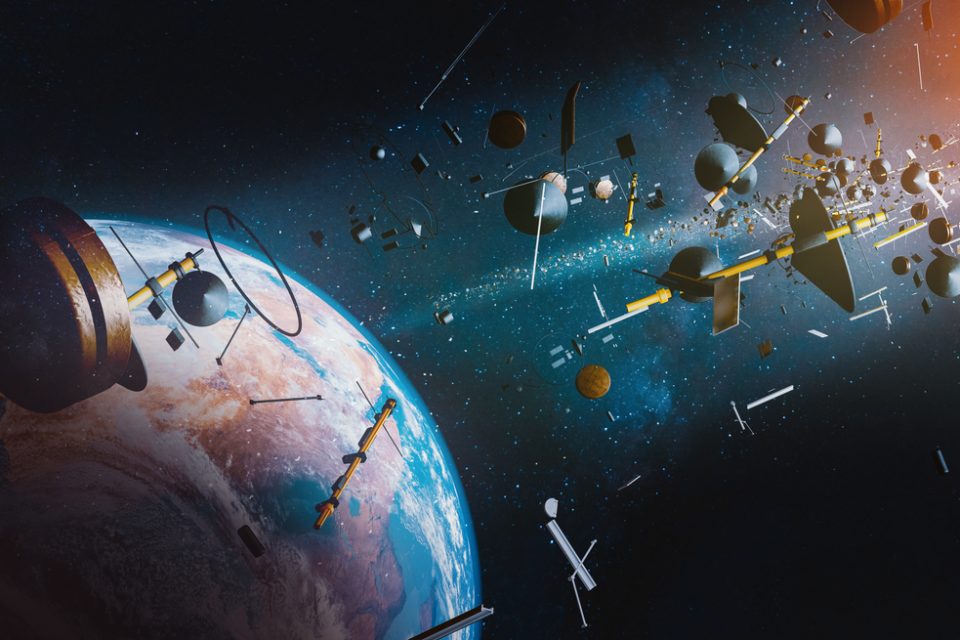 pace is pretty big and infinite. But the same can’t be said of the Low-Earth Orbit (LEO), which is cluttered with all kinds of space junk, including obsolete space stations, satellites, and bits and pieces of flying objects that didn’t disintegrate in the rough and burning descent back to Earth. The outer space is filled with countless pieces of metal and debris. There are working spacecraft, derelict satellites, discarded remnants of past launches and repair jobs, and a few thousand pieces of barely trackable former satellites whirling around the Earth at a velocity high enough to make even a grain of sand a very dangerous projectile. Experts estimate that collision risks are high, which could cause a catastrophic event if it goes out of control.
pace is pretty big and infinite. But the same can’t be said of the Low-Earth Orbit (LEO), which is cluttered with all kinds of space junk, including obsolete space stations, satellites, and bits and pieces of flying objects that didn’t disintegrate in the rough and burning descent back to Earth. The outer space is filled with countless pieces of metal and debris. There are working spacecraft, derelict satellites, discarded remnants of past launches and repair jobs, and a few thousand pieces of barely trackable former satellites whirling around the Earth at a velocity high enough to make even a grain of sand a very dangerous projectile. Experts estimate that collision risks are high, which could cause a catastrophic event if it goes out of control.
Scientists were asked to find a solution to dispose of all the useless spacecraft carcasses instead of having them circling the Earth for eternity. What goes up in space must come down to Earth, and they found that the best place to dump space junk is in the middle of nowhere, far away from everything and everyone, at Point Nemo.
Point Nemo: the place where spacecraft go to die

What do you call a place where there is no one? A pole of inaccessibility. Because of its remoteness from human settlements and shipping routes, it was decided that Point Nemo provided the perfect site for a space cemetery where obsolete satellites, rocket parts, and whole space stations are sent to rest. Countless spacecraft that served their purpose, endured the extreme conditions of outer space, and the rough descent towards Earth is now buried 4000 meters under the sea.
Point Nemo is the most remote location on Earth, it is so far removed from civilization that the closest humans to that location at any given time are likely to be astronauts from up above. Point Nemo is located in the South Pacific. It lies at 48°52.6′ south latitude 123°23.6′ west longitude. The nearest lands to Point Nemo are 2,700 km away: Ducie Island in the Pitcairn Islands, to the north, the islet of Motu Nui by Easter Island, to the northwest, and Maher Island in Antarctica, to the south. To the west, you have to travel all the way to the Chatham Islands, in New Zealand, and to the east, all the way to Chile to find another living soul.
Another reason why Point Nemo is the ideal site for a spacecraft graveyard is that there is not much marine life in this area, and therefore no reason for anybody to demonstrate against the risk of wildlife pollution caused by a bunch of obsolete spacecraft dumped at the bottom of the ocean. Point Nemo’s coordinates fall within the South Pacific Gyre, an enormous rotating current preventing nutrient-rich water from flowing into the area. Without any food sources, sustaining most life in this part of the ocean is impossible, making it the least biologically active region in the world’s oceans.

How do you find a name for the place in the ocean that is away from everything and everyone? You name it after Captain Nemo of course; the main character in 20,000 Leagues Under the Sea. In Jules Verne’s novel, he is described as antisocial, shunning the company of other people by roaming the oceans in his submarine, the Nautilus.
Point Nemo is used as a spacecraft graveyard by the Russians, the Americans, the Europeans, and the Japanese. More than 263 pieces of junk have crashed landed into the area since 1971, including some of the world’s greatest spacecraft, including the Russian Mir space station and NASA’s first space station, Skylab. It’s thought the International Space Station will end up there around 2024.
Point Nemo: the place where space people get to clean up their act

Dumping a de-commissioned space station into a space graveyard is not a small affair and requires a big team of highly skilled people to organize the dumping. To successfully land some space junk at Point Nemo, engineers have to carefully calculate where to de-orbit a spacecraft so that it re-enters the Earth’s atmosphere exactly where they want it i.e., in the middle of nowhere.
The European Space Agency has a dedicated Debris Office with a whole bunch of experts specialized among other things in putting together risk assessment models for space debris, in-orbit collision avoidance strategy, re-entry predictions, maintaining information on all trackable objects lost in space, and assessing on-ground risk.
When the first U.S. space station Skylab decayed and disintegrated into Earth’s atmosphere in 1973, scattering debris across the Indian Ocean and Western Australia, NASA calculated there was a 1 in 152 chance of the spacecraft’s debris hitting people on the ground.
In March 2001 Scientists reckon the odds of being hit by a piece of falling space junk were around one in a trillion. Lottie Williams from Tulsa Oklahoma was that unlucky one. Williams was exercising in a Tulsa Park one morning in 1997 when she was hit on the shoulder by a six-inch piece of blackened metallic material. A used Delta II rocket had crashed into the Earth’s atmosphere half an hour earlier and scientists at NASA believe that Williams was hit by a part of it – making her the only person in the world known to have been hit by man-made space debris.
Rest assured that unless the Debris Office from the Space Agency gets their de-orbiting and re-entry calculations really wrong, the chance of being hit by space debris is extremely remote, as remote as Point Nemo is.

Author, Blogger & Storyteller with an urge to write about history, philosophy, and human nature. You can find out more about myself, my book “This Is Your Quest” and my blog at https://authorjoannereed.net/. I welcome the opportunity to engage directly with my readers so feel free to contact me should you feel the urge to do so at yourquest@authorjoannereed.net. A good story makes history!





